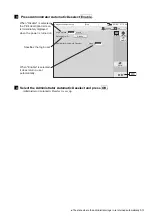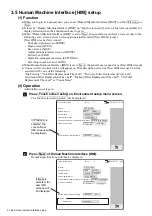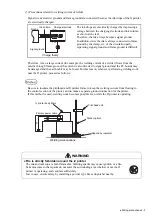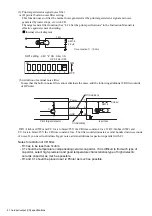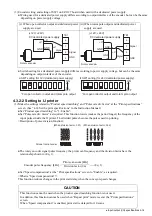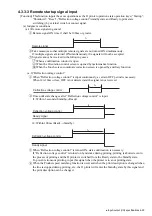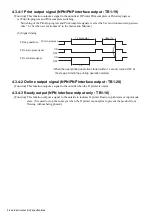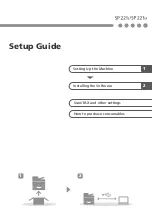
●
Input/output (I/O) specifications 4-12
Printing
Printing
3 ms min.
3 ms min.
OFF ON
*Printing preparation
time
(Print start delay
adjustment = 0)
Print object
detection signal
Printing operation
(Printing interval)
(4) Relationship between print object detection signal and printing operation
*: The printing preparation time minimum
value varies with the print dot matrix, ink
drop use, etc., however, the right table can
be used as a reference.
Nozzle diameter
Reference of printing preparation
time minimum value
65µm
9 ms
The accurate printing preparation time can be calculated by following formula.
Necessary printing preparation time (Note 1) = [(One scan time)
×
(N + 1) ] (ms)
(One scan time) =
(Number of vertical dots + Character width)
×
Ink drop use percentage
Excitation frequency (kHz)
(ms)
N : (One scan time
×
N) Remaining number that is set to "a"
(a: Refer to the right table.)
Excitation frequency: 68.9 (Model UX, with 65µm nozzle and 1067K ink)
Refer to “Handling guidance of each ink” manual to check the supported excitation frequency.
>
=
(Note 1) Time for repeated printing of fixed characters. When using the communications function or
2-dimensional bar code function, it will be longer than the time calculated from this formula.
When the speed is followed up, the number of encoder pulses shown below will serve as reference for the
minimal value of print space:
Excitation frequency (kHz)
(ms)
Minimal time of 1 pulse =
(Number of vertical dots + Character width)
×
Ink drop use percentage
Number of necessary
a
Minimal time of 1 pulse
Frequency division setting value (pulse)
+
encoder pulses =
(5) Tracking function
●
This function achieves printing even when two or more print objects are positioned between the print
object detector and print head.
●
Up to four print objects can be positioned between the print object detector and print head.
●
This function cannot be exercised simultaneously with the repeat-printing function.
Nozzle diameter
a
65µm
5.5

